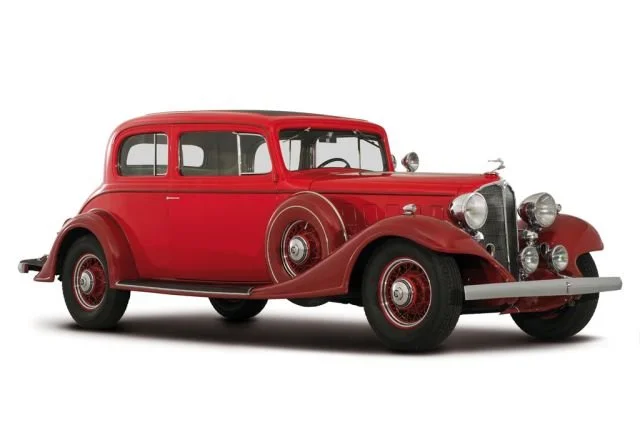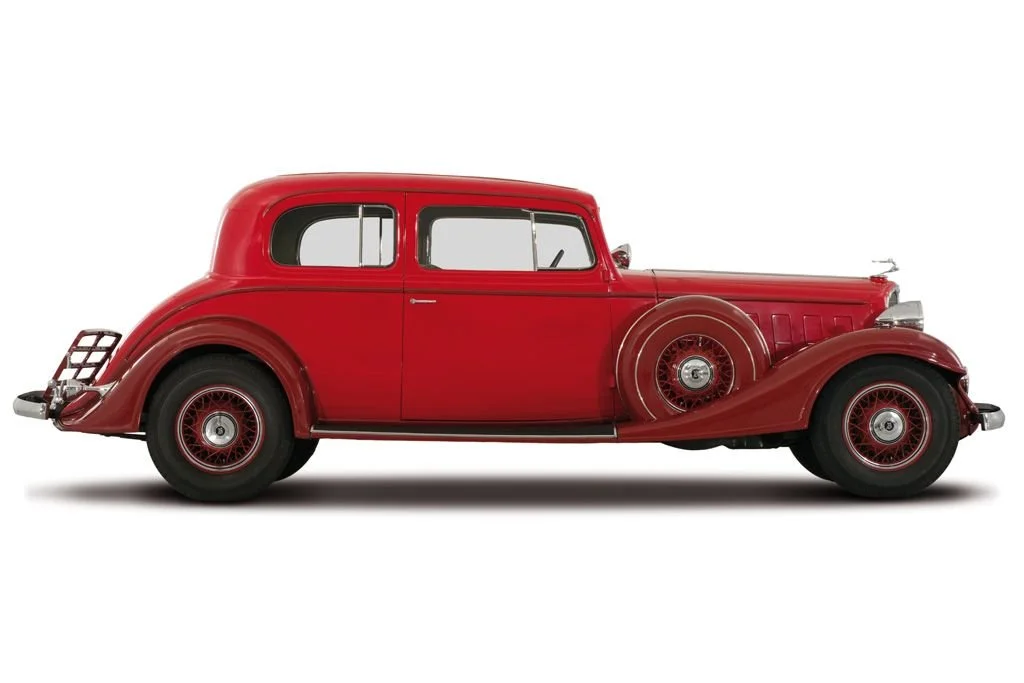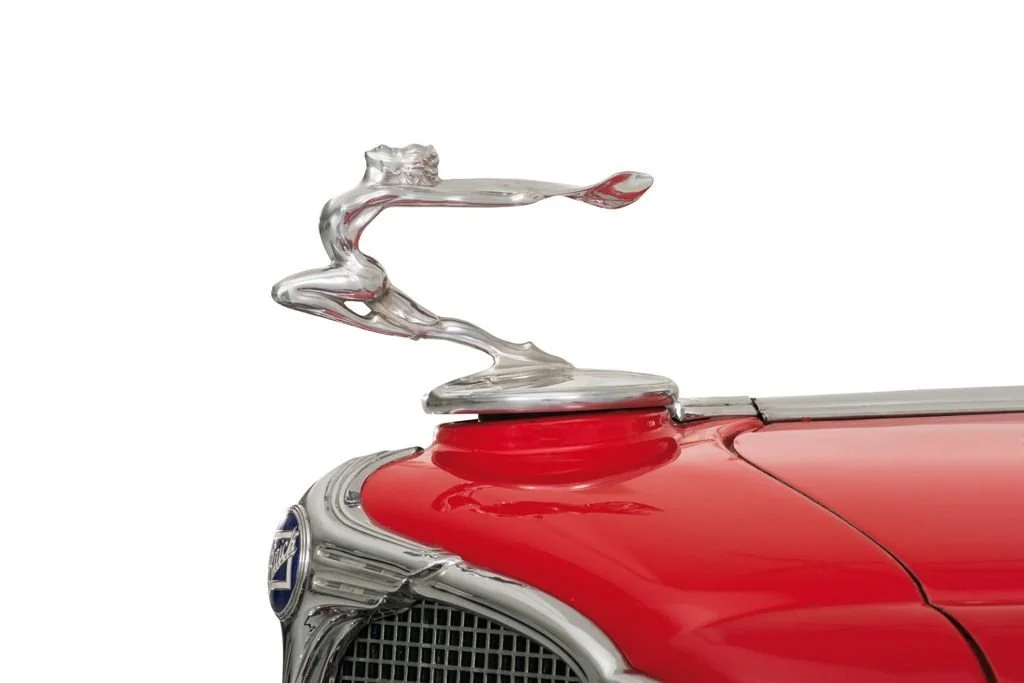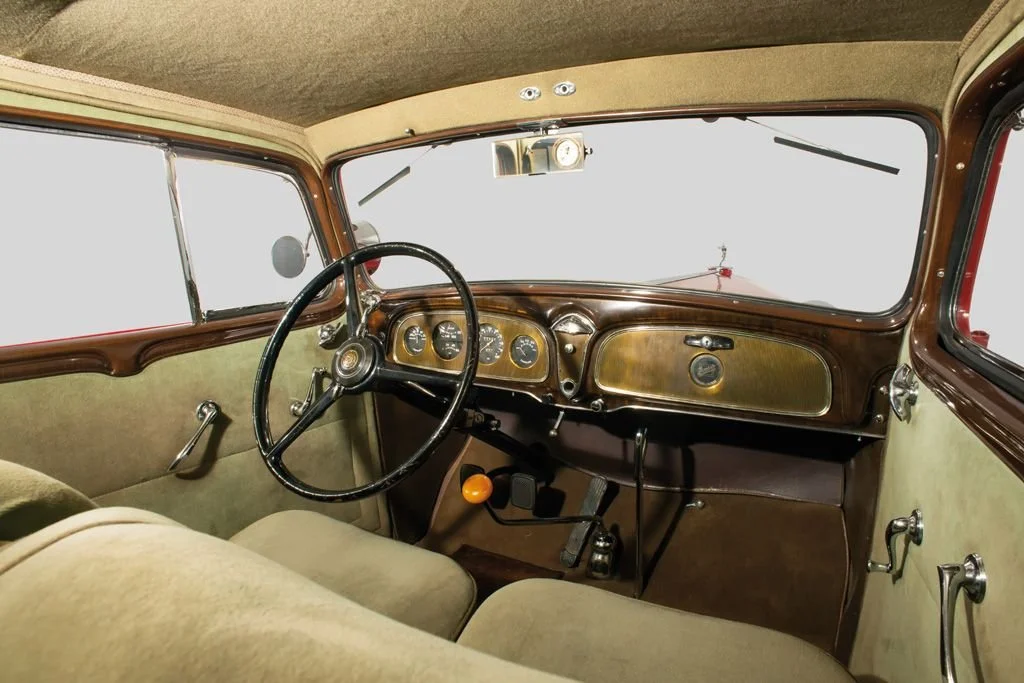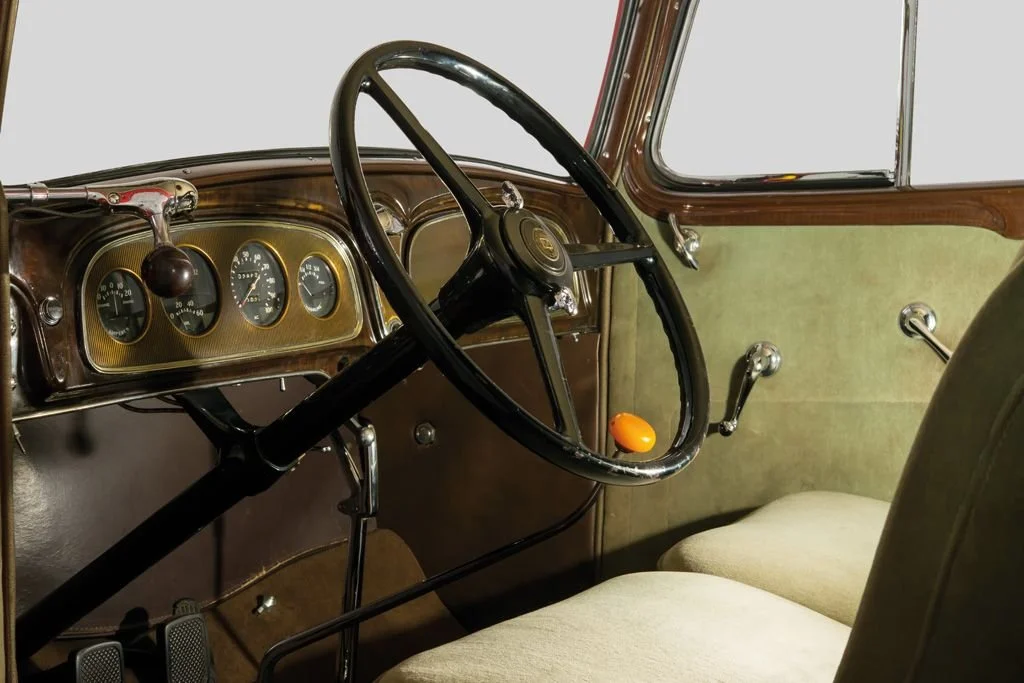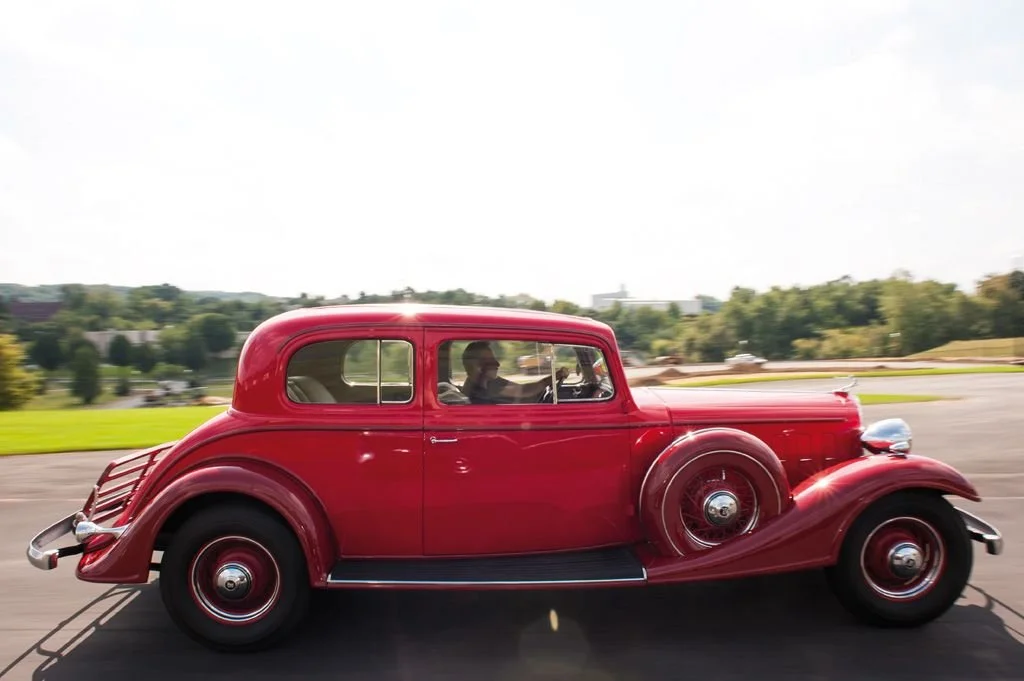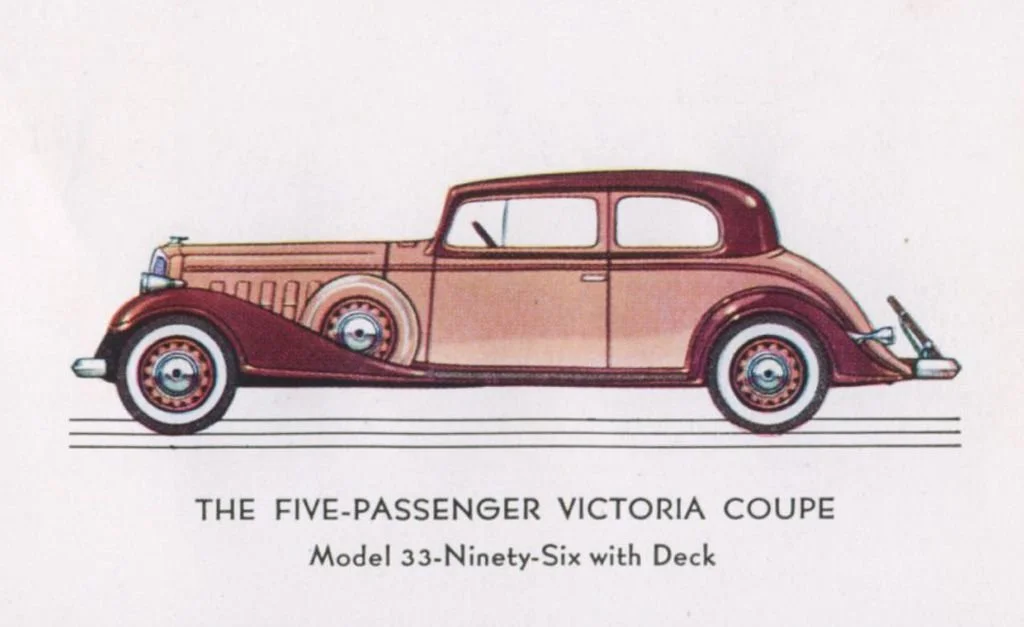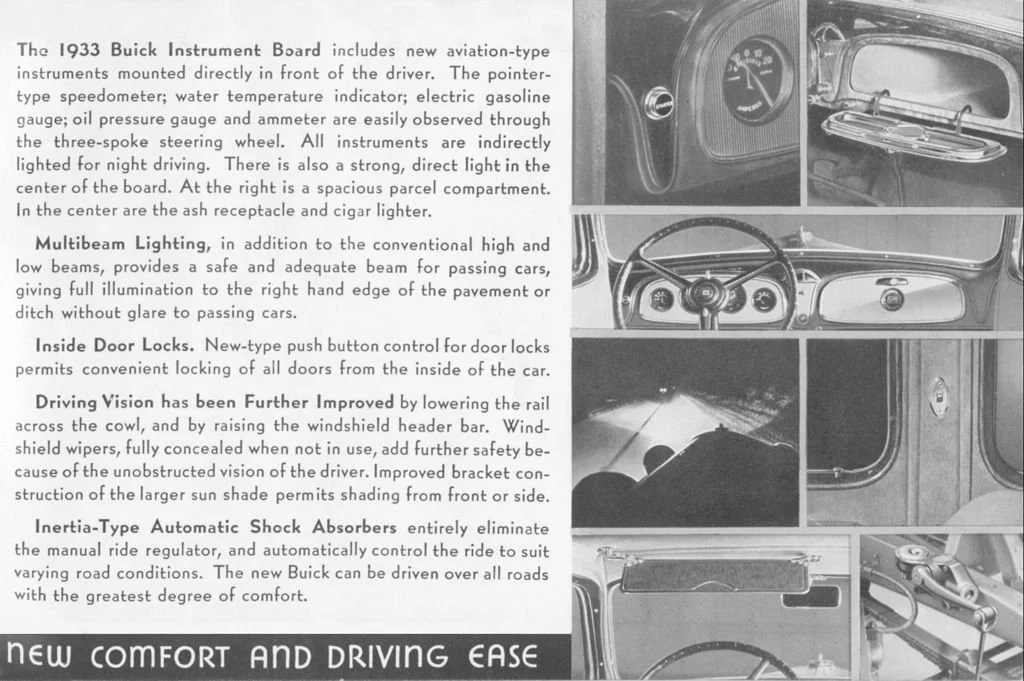-
This Victoria Coupe is a body style that first appeared in 1932. Essentially it is a rebranding of the ever popular two-door sedan, a closed car with two doors, two rows of seats and seating capacity for five adults.
This car was part of the famed Harrah’s Automobile Collection in Reno, Nevada. During the hard times of the Great Depression dark muddy colors were the norm for automobiles. Harrah’s chose this period correct Buick offering of bright red, called Sealing Wax Red coupled with the very soft green interior, that is unusually bright and cheery for the era.
The car was located in a collection in Texas and purchased for The NB Center in 2004.
-
Company
General MotorsMake
BuickModel
33-96Body Style
Victoria Coupe, 2-door, 5 passBody Manufacture
Fisher Body Co.Model year
1933Wheelbase
138 inchesLength
N/AEngine
OHV, 8-inline, 344.8 cidHorsepower
113 bhp @ 3200 rpmTransmission
Sliding gear, 3-speed manualOriginal Base Price
$1,785Brand Production
45,150 +1,774 export for model yearThis Car Production
556 -
Three years into the Great Depression and things couldn’t get any worse. The entire world was reeling under the economic collapse. The relatively young automobile industry was facing its biggest challenge ever. Automobile manufacturers scrambled to retain and hopefully gain market share in the ever shrinking pool of customers. Buick, a long-time market leader, had been struggling since its sales peak in 1926. Their products were deemed overly conservative by potential customers and sales suffered. Now the depression was threatening the company's very existence.
In the fight to find buyers for automobiles, manufacturers tried to offer a wider range of choices of both styles and prices. Luxury manufacturers, such as Packard, began to offer lower priced cars while mid-priced Buick offered higher priced luxury cars. The top of the line Buick cars were the series 90, first introduced in 1931. Because of the low sales volume in 1932, the 1933 series 90 body options were cut from nine to five. However, the cars produced retained their luxurious appointments and mechanical refinement.
In fact, 1933 was a year of major styling changes for Buick. New front and rear fenders with deeper valances and more sweeping curves, plus a 2-1/4” height reduction, gave all models a fresher appearance. Adding to this sense of newness was the new V-shaped grille and the standardization of wire wheels across the product line. Technical improvements were headlined by a new x-cross member frame, as well as Fisher No-Draft ventilation. The series 90 grew to a 138” wheelbase, further differentiating it from the lower models. The engine remained the same 344.8 cubic inch inline-eight used in 1932.

